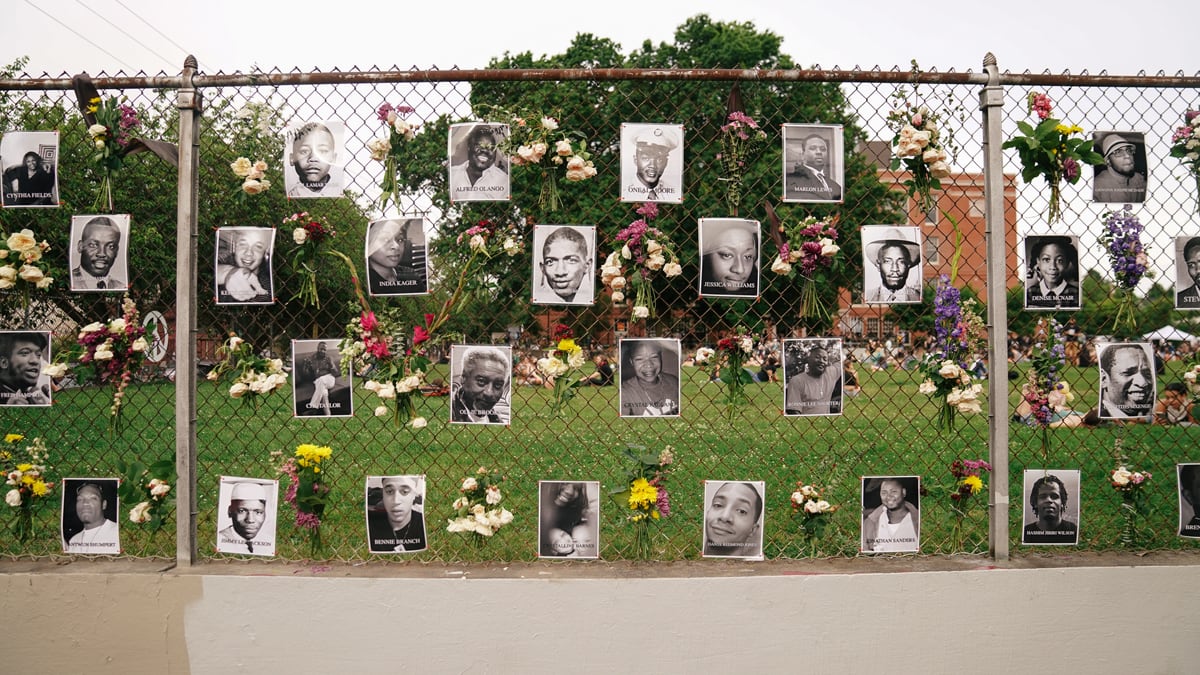Five incidents indelibly shaped the relationship between the city's Black community and the Portland Police Bureau. In four of them, officers were fired but got their jobs back. In the fifth, no cops lost their jobs.
THE BURGER BARN (1981)
On March 12, Officers Craig Ward and James Gallaway threw four dead opossums in front of a Black-owned North Portland restaurant called the Burger Barn. The city erupted in protest, and Commissioner Charles Jordan, the first Black man to serve on the City Council and as police commissioner, fired the officers. Hundreds of officers and their families marched on City Hall. An arbitrator ordered the city to give the officers their jobs back, and Mayor Frank Ivancie stripped Jordan of the Police Bureau.
LLOYD "TONY" STEVENSON (1985)
On April 21, Lloyd "Tony" Stevenson was shopping at a Northeast Portland 7-Eleven when he helped a store clerk fend off a robber. Stevenson, an off-duty security guard and father of five, then got into a fight with a witness in the parking lot. A white Portland police officer, Gary Barbour, responded to the scene and placed Stevenson, who was Black, in a chokehold. Stevenson collapsed and died 45 minutes later at the hospital. On the day of Stevenson's funeral, two white officers, Paul Wickersham and Richard Montee, handed out T-shirts to fellow cops. The shirts depicted a smoking handgun with the words "Don't Choke 'Em, Smoke 'Em." Mayor Bud Clark fired Wickersham and Montee, but an arbitrator overturned the firings and they got their jobs back.
KENDRA JAMES (2003)
On May 5, Portland police pulled over a vehicle in which Kendra James, a 21-year-old Black mother of two, was a passenger, because it failed to make a complete stop at a stop sign. After police arrested the driver on an outstanding warrant, James jumped into the driver's seat and attempted to drive away. As the car rolled forward at what eyewitnesses described as a walking pace, Officer Scott McCollister shot James in the hip. Police pulled James out of the car and handcuffed her. As she lay dying on the ground, the police set up crime scene tape and did not check her vital signs. McCollister was placed on unpaid leave, and an arbitrator later determined that McCollister did not violate police policy when he killed James. He was reinstated with back pay.
AARON CAMPBELL (2010)
On Jan. 29, Aaron Campbell was holed up with his girlfriend and children in an apartment at Northeast 128th Avenue and Sandy Boulevard. A caller told 911 that Campbell was armed and suicidal. Campbell let the others in the apartment go and told an officer via text message that he was coming out. He walked out with his hands behind his head but refused to raise them. An officer shot him with a beanbag round, and Campbell ran. Officer Ron Frashour shot him fatally in the back, later saying he thought Campbell, who was Black, was reaching for a gun. No gun was found. Chief Mike Reese and Mayor Sam Adams fired Frashour, but an arbitrator and, later, the Oregon Court of Appeals ordered him reinstated. The city of Portland paid Campbell's family a $1.2 million settlement.
KEATON OTIS (2010)
On May 12, 25-year-old Keaton Otis was driving his mother's Toyota Corolla in Portland's Lloyd District. Police pulled him over because he failed to signal a turn and because the young Black man looked "like a gangster," The Oregonian reported. Four patrol cars surrounded Otis, and officers ordered him to put his hands on his head. Police testified that Otis, who suffered from mental illness, grabbed the steering wheel while screaming profanities. The officers said Otis reached for a Crown Royal bag that contained "something bulky" before shooting one of the officers, Chris Burley, twice. Burley and the three other officers—Cody Berne, James Defrain and Ryan Foote—fired 32 shots at Otis, hitting him 23 times. A Multnomah County grand jury found the officers' use of force was justified, and Independent Police Review said the shooting was "within policy."
